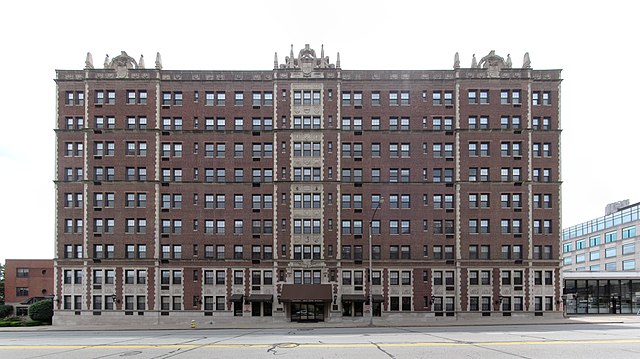
One of Alden and Harlow’s distinguished designs for small libraries, this one has changed very little externally since it opened.

A fine Gothic building with a prominent tower in the west front, this church sits right on the border between Shadyside and Oakland—it would be in Oakland if it were on the other side of the street. The view is marred by utility cables, which is true of most things in most American cities. Europeans put those things under the ground; Americans seldom even notice what an aesthetic blight they are, not to mention how often storms bring them down.


When this dignified Renaissance palace on Neville Avenue was built, there were telephone exchanges like this all over the city, each one stuffed with operators directing calls from here to there. They were built to be ornaments to their neighborhoods rather than mere excrescences of technology. These days we dial numbers directly, but this building still belongs to the successor of the Bell Telephone Company.

Note that the full picture is more than 45 megapixels.
Apartment life was never as much of a big thing in Pittsburgh as it was in some other big Eastern cities, but the corner of Oakland next to Shadyside is mostly given over to large blocks of apartments like this. The Fairfax affects an English style; old Pa Pitt does not know whose arms are on the façade, but they do not seem to be the arms of Lord Fairfax.





This was a very tall building when it opened in 1892. It’s certainly stretching a point to call this a skyscraper, yet it is in some ways the seed of all subsequent skyscrapers in Pittsburgh. This was the first building in Pittsburgh, and one of the first in the world, built with steel-cage construction, which makes practically indefinite height possible. Below we see the Conestoga Building with a couple of its great-grandchildren behind it: One PPG Place and Fifth Avenue Place.


This was built for the Second United Presbyterian Church, but the Baptists moved in in 1933 (according to the History of the Churches of the Pittsburgh Baptist Association). It is now the Union Project, an arts center and events hall.


